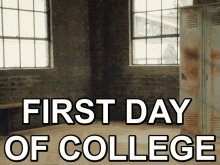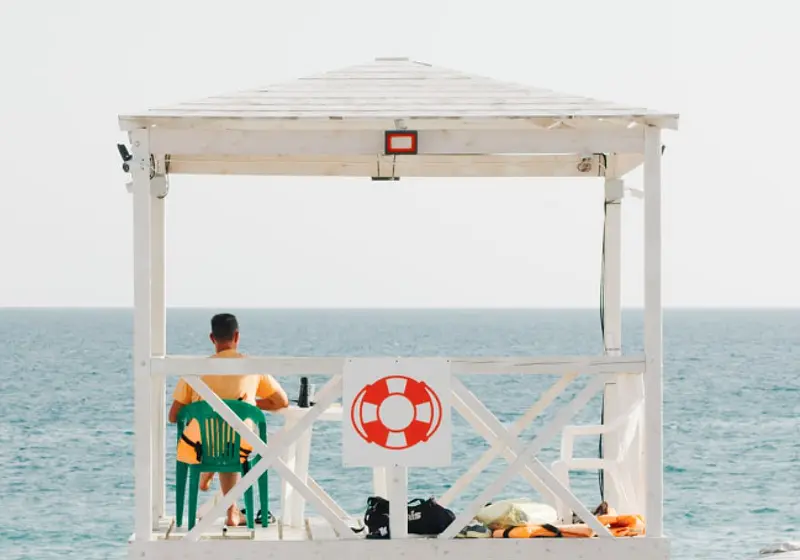For many teens, lifeguarding is the perfect summer job. It's fun, relatively easy, provides a social environment many of us miss when school ends, and has significant earning potential since lifeguards are currently such a coveted resource. But facilities and organizations that offer training programs aren't always clear about their requirements. If you're thinking about becoming a lifeguard, here's everything you need to know about the certification process from passing the tests to mastering the skills to finding a job.
Note: This information is based on the Red Cross lifeguard course for pools, the most common certification course offered. However, courses can vary from state to state and facility to facility depending on the organization offering training. While much of the information will be the same, check your local facilities for specific details.
The first thing you should do is identify what type of environment you'll be working in. Training to be a lifeguard at a beach or reservoir is different from the training to be a lifeguard at a pool, and you'll need to take the correct course in order to be certified to work at each respective place.
Next, you'll need to find a course. In most cases, lifeguard certification courses will include lifeguard, first aid, CPR, and AED certification which is valid for up to two years. These are great life skills to know, and they can come in handy outside lifeguarding as well.
Some facilities (especially recreation centers that are desperate for guards) will waive the course fee, which can be anywhere from $100 to $375, if you commit to working for them. You might have to cover the cost of the training if you want to work somewhere that doesn't offer a course.
The next step is completing the online portion of the class. This is a series of videos and questions that provides basic knowledge of the different entries and rescues you'll use, first aid protocols, neck and spinal injuries, CPR skills, and more. At the end, there is a 40-question multiple-choice test that you have to pass with an 80% in order to continue with the in-person training.
You'll have to show proof of completion of this online section before participating in the classroom sessions, and since the online class takes about 7 hours to complete, make sure you set enough time aside for that. You can access this online class via a link provided by the facility offering the training.
The in-person class consists of two to four days of hands-on practice with entries, rescues, first aid techniques, CPR and AED, equipment, and emergency scenarios. But before you can even begin the class, you'll have to pass a pre-test that tests your water proficiency. The test is different from program to program, but there is always some combination of swimming, treading water, and diving for a brick. The Red Cross course includes a 300-yard swim, two minutes of no-hand treading, and a timed swim with a 10-pound brick dive in the middle.
While you'll likely be spending a majority of your time as a lifeguard sitting and watching, lifeguarding can be a physically demanding job. Rescuing people from the water isn't an easy task, so be prepared to spend lots of time being physically active during the training course. You'll play both rescuer and victim and get lots of practice with back boarding as well.
Once you've made it through training, there are three finals to pass before you're an officially certified lifeguard. The first is a 35-question multiple-choice test. It is identical in format to the online one, but it focuses more on lifeguarding techniques, rules, and steps instead of primarily CPR like the online version. You have two chances to pass this final with at least an 80%.
The second final is completed in a group of four. One person plays rescuer, another back-boarder, and the other two come in later with an AED and bag valve mask (BVM). The goal of this final is to act out a scenario where CPR and an AED are needed and where you are providing aid in a group setting.
The third final is done individually. For this final, you must activate the emergency action plan, rescue the victim, get them to the backboard and out of the water, complete a primary assessment, and give two ventilation with gloves on in a minute and thirty seconds or less. Then you must perform three minutes of CPR.
After all this, you're certified! While it may seem daunting, these finals are designed to make sure you can effectively perform the correct rescue and safely provide care to a victim in the most efficient way possible to ensure they have the best possible chance of survival. If you're thinking about becoming a lifeguard and want to pass the tests, here are some important things to remember:
- Know the specifics of CPR and situations when the steps and rules change. For example, the difference between infant, child, and adult CPR and the difference between one-person and two-person CPR.
- Be familiar with symptoms of life-threatening illnesses. You'll need to know how to identify serious conditions, so you can provide the appropriate care (and correctly answer questions on the test).
- Know what to do in cases where there is a suspected spinal injury. Many of the multiple-choice questions quiz your ability to complete the right steps when there is a spinal injury including what rescue to perform, what not to do, symptoms present with a head or neck injury, and more.
- Be prepared to deal with both land and water emergencies. You might be training to be a lifeguard, but your certification comes with the expectation that you can help people on land as well. Know the symptoms of conditions such as stroke, cardiac distress and arrest, heat stroke, shock, and more, and know what to do in these situations.
- Make it clear what you're doing during the test. Talk through steps and count out loud during CPR, so the tester knows you're going through each step.
- Use common sense. Much of lifeguarding is simply knowing when and how to act, and many of the situations covered are easily dealt with as long as you know the rationale behind each step and requirement.
Now you're ready to become a lifeguard! The process to get certified is long and somewhat tedious, but with lifeguards hot in demand, it's well worth the time. With the important life skills certification courses provide, you'll be ready to work at one of the most popular teen summer jobs in no time!




















